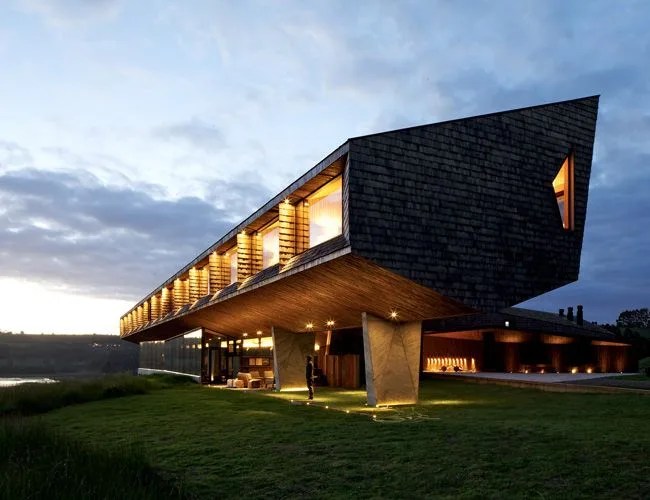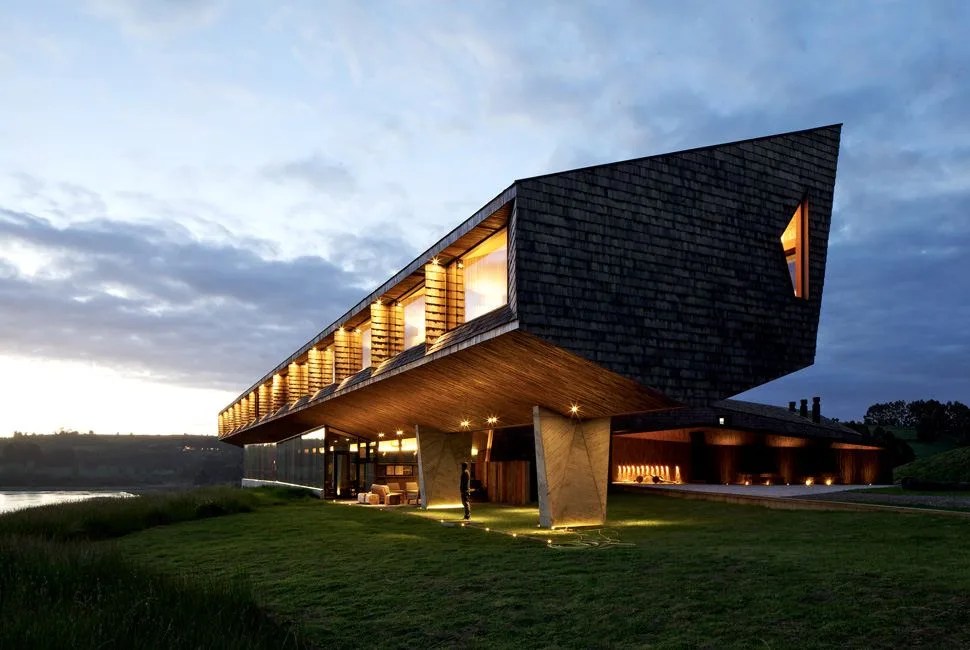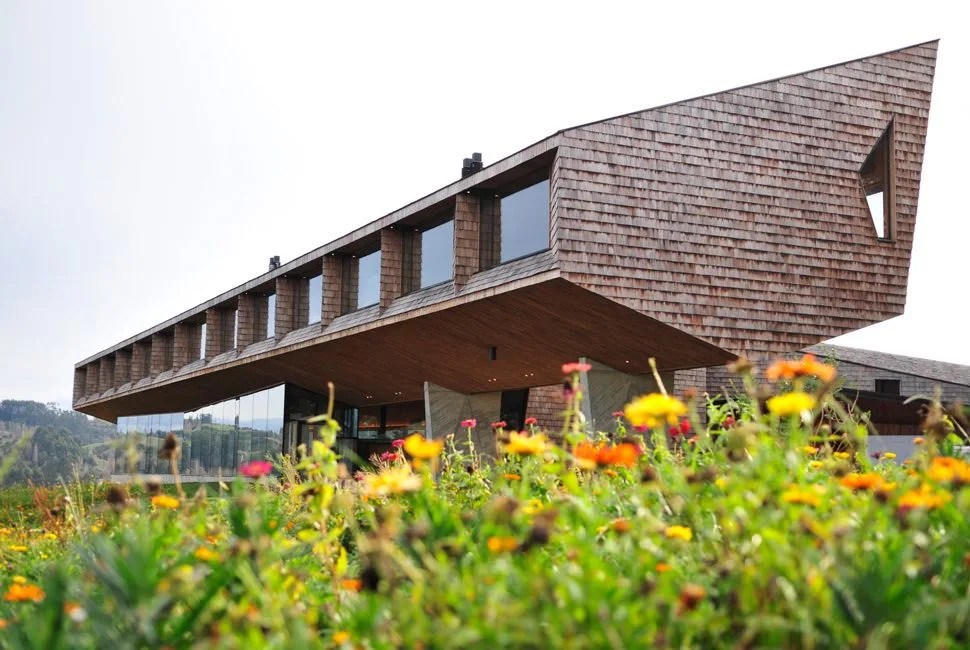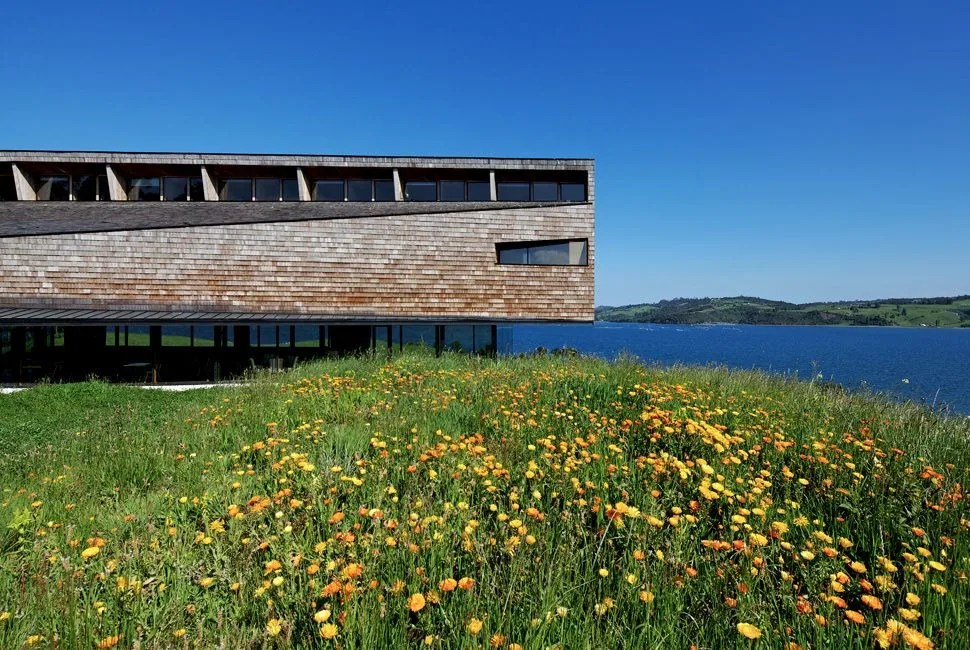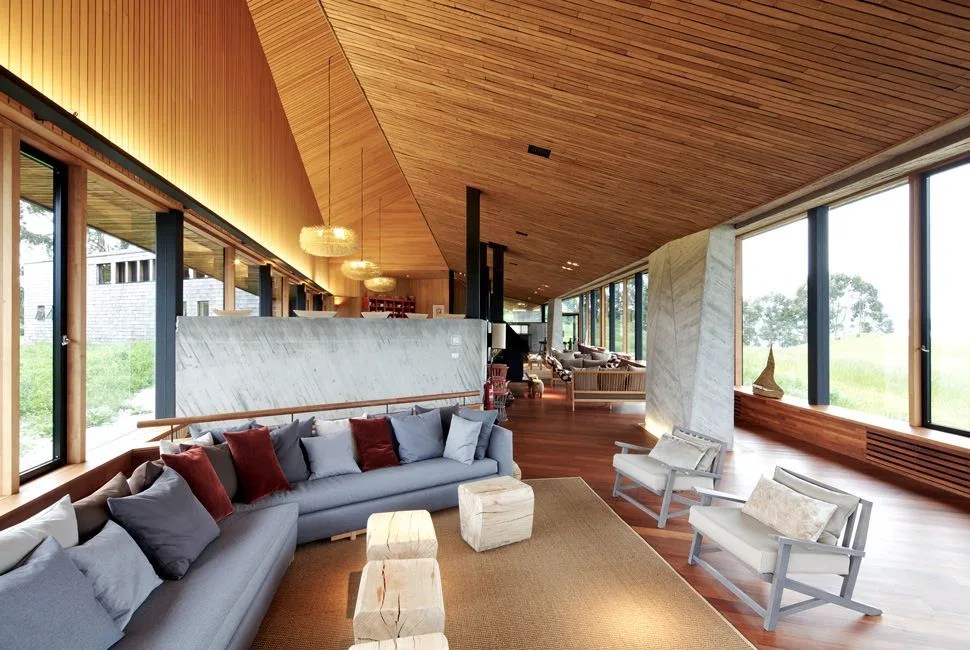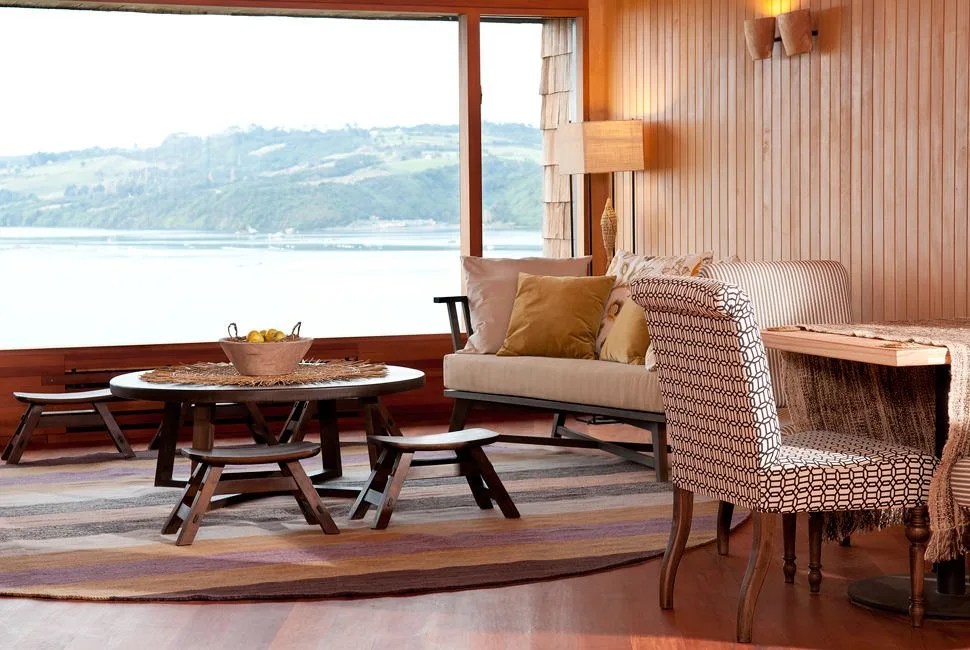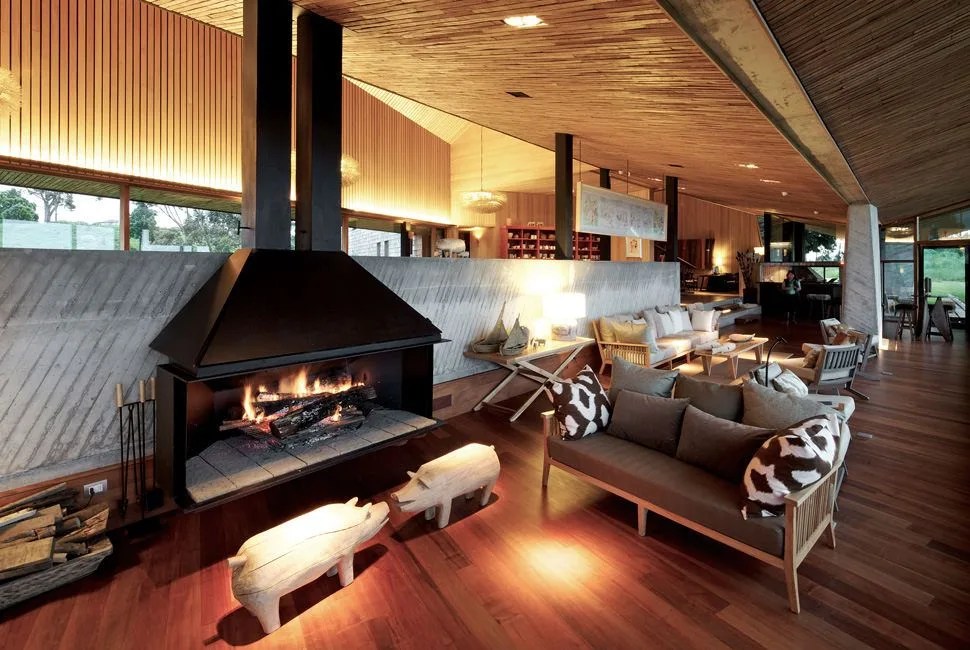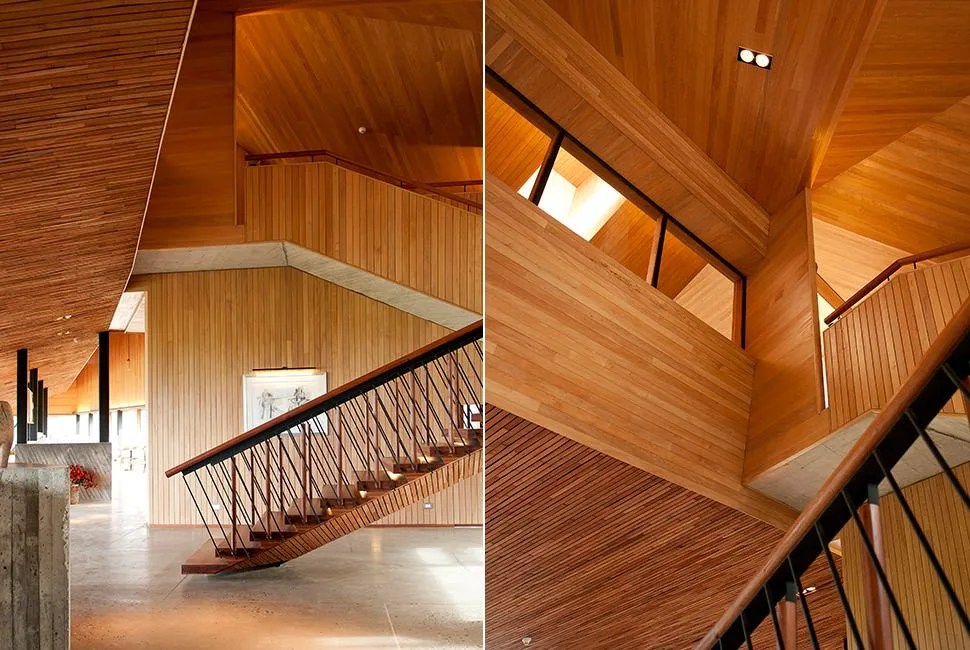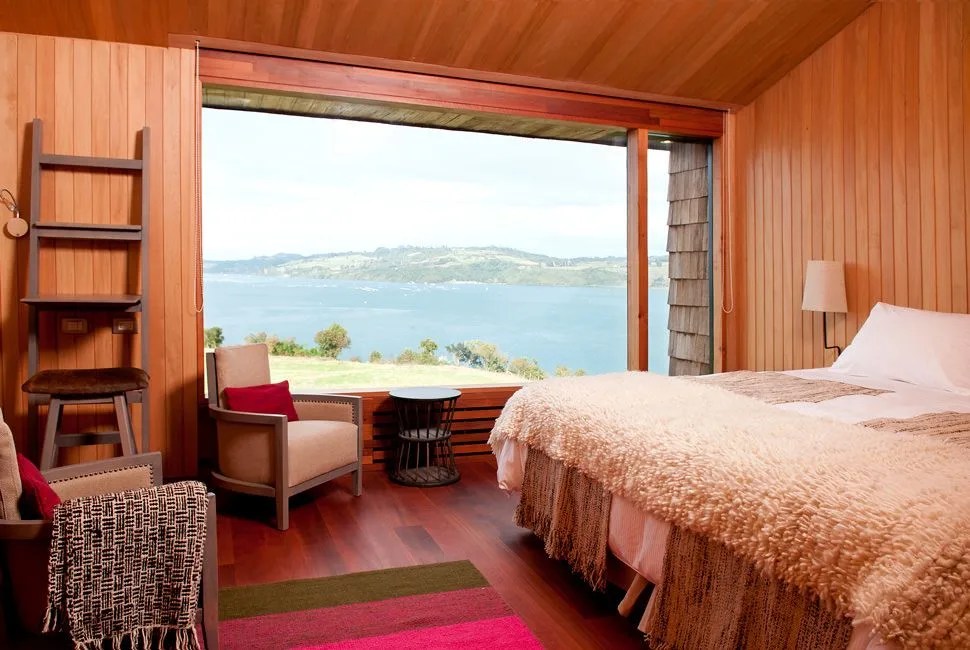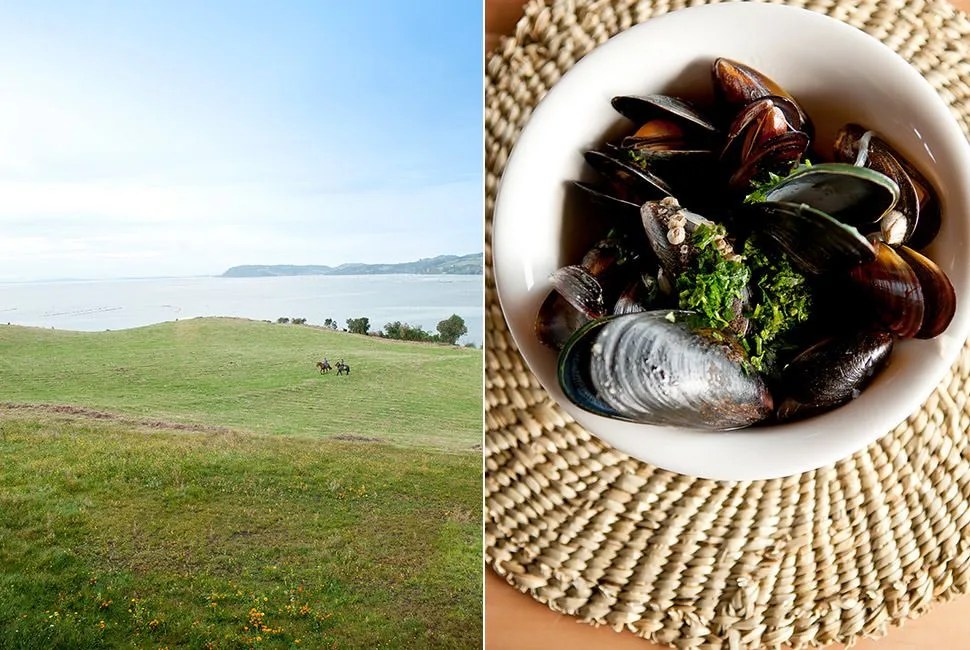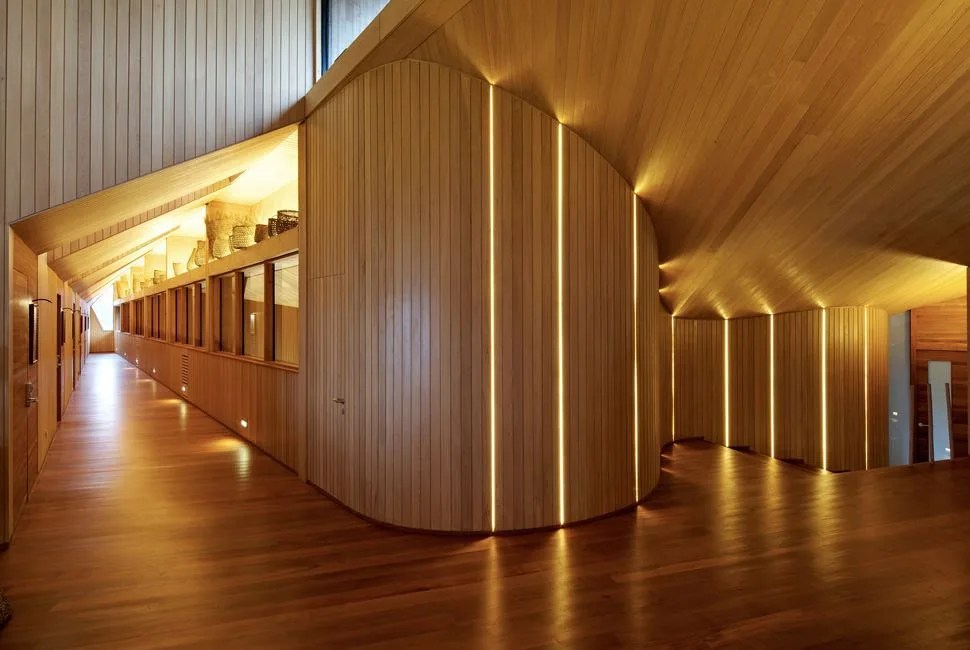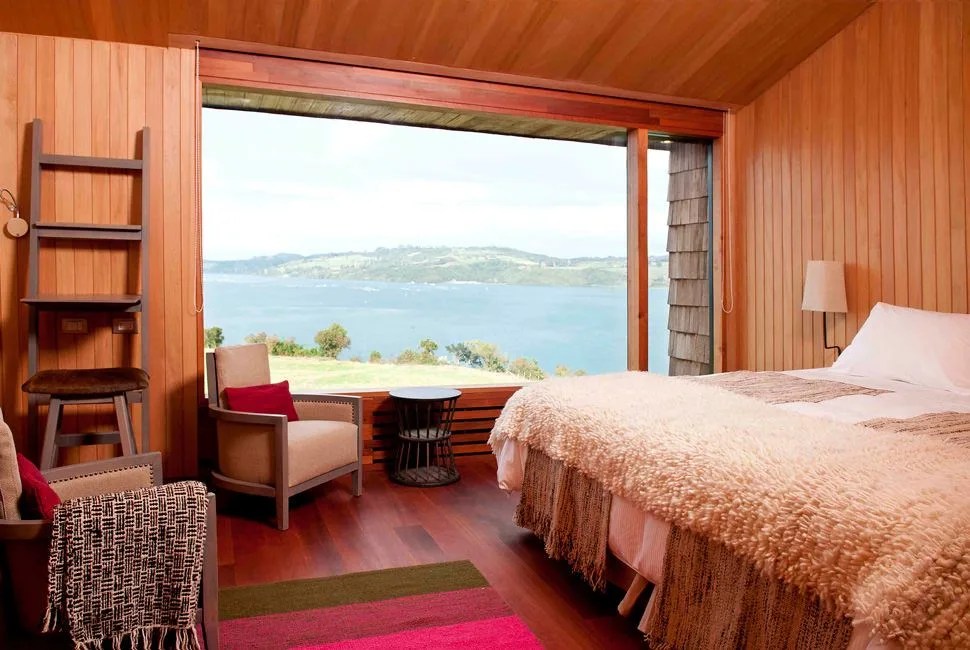14 photos
The Isla Grande de Chiloé may be less than two miles across Chile’s Chacao Channel from its daredevil southern neighbor, Patagonia, but the 3,241-square-mile island is a world apart. Where Patagonia screams no-holds-barred adventure, Chiloé basks in its old-world timelessness. Adventurers are drawn to the island’s otherworldly culture, made fearsomely inaccessible by tempestuous weather. The seafaring island can only be accessed from Chile’s capital, Santiago, by plane or ferry. Tales of ghost ships, witches and warlocks are signals of the island’s lack of modernization
MORE TROPICAL STAYS: Cube Guest House, South Africa | Hotel Del Coronado, California | Rosewood Mayakoba, Mexico
But it’s not completely devoid of the contemporary. Middle-aged Chilean tourists have long frequented the Chiloé Archipelago’s all-inclusive boutique hotel, Tierra Chiloé, for its elaborate farm-to-table meals, scenic boat tours and lazy afternoon tours of wooden Jesuit churches. New to the scene are the young, adventure-hungry American tourists on the hunt for the perfect combination of luxury accommodations and unrestricted, off-the-beaten-path adventures. To keep this new wave of young North American thrill seekers happy, Tierra Chiloé is bringing guides in from Tierra’s sister properties in Patagonia and the Atacama Desert and creating a handful of new daylong adventures — everything from sea kayaking with Magellanic penguins to hiking deep into western Chiloé’s verdant forests, the site of one of the world’s last surviving groves of Fitzroya cypress trees.
If You Go
PHOTO OPP: Take postcard-worthy photographs of Castro’s iconic and colorful palafitos neighborhood.
EAT: Head to Castro’s local farmers’ market and buy a milcao, warm potato bread often stuffed with sausage.
